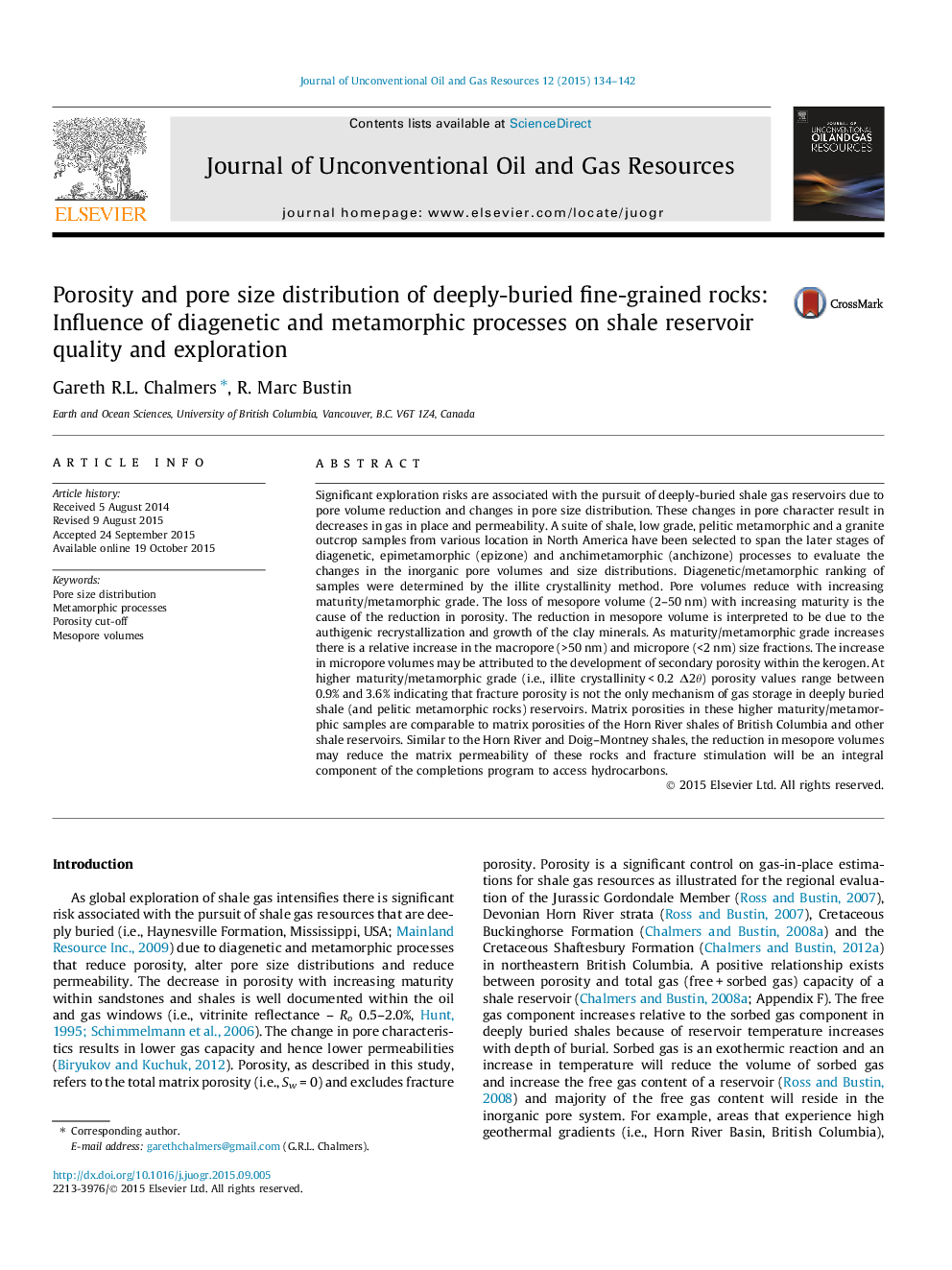| کد مقاله | کد نشریه | سال انتشار | مقاله انگلیسی | نسخه تمام متن |
|---|---|---|---|---|
| 1756693 | 1522950 | 2015 | 9 صفحه PDF | دانلود رایگان |
• Risk in exploring shale reservoirs in deeper area due to diagenetic/metamorphic processes.
• Illite crystallinity analysis is used due to low TOC contents and overmaturity.
• With increasing maturity mesopore volumes reduce while macropores and micropores increase.
• The reduction of mesopores is due to recrystallization of illite related to metamorphic processes.
Significant exploration risks are associated with the pursuit of deeply-buried shale gas reservoirs due to pore volume reduction and changes in pore size distribution. These changes in pore character result in decreases in gas in place and permeability. A suite of shale, low grade, pelitic metamorphic and a granite outcrop samples from various location in North America have been selected to span the later stages of diagenetic, epimetamorphic (epizone) and anchimetamorphic (anchizone) processes to evaluate the changes in the inorganic pore volumes and size distributions. Diagenetic/metamorphic ranking of samples were determined by the illite crystallinity method. Pore volumes reduce with increasing maturity/metamorphic grade. The loss of mesopore volume (2–50 nm) with increasing maturity is the cause of the reduction in porosity. The reduction in mesopore volume is interpreted to be due to the authigenic recrystallization and growth of the clay minerals. As maturity/metamorphic grade increases there is a relative increase in the macropore (>50 nm) and micropore (<2 nm) size fractions. The increase in micropore volumes may be attributed to the development of secondary porosity within the kerogen. At higher maturity/metamorphic grade (i.e., illite crystallinity < 0.2 Δ2θ) porosity values range between 0.9% and 3.6% indicating that fracture porosity is not the only mechanism of gas storage in deeply buried shale (and pelitic metamorphic rocks) reservoirs. Matrix porosities in these higher maturity/metamorphic samples are comparable to matrix porosities of the Horn River shales of British Columbia and other shale reservoirs. Similar to the Horn River and Doig–Montney shales, the reduction in mesopore volumes may reduce the matrix permeability of these rocks and fracture stimulation will be an integral component of the completions program to access hydrocarbons.
Journal: Journal of Unconventional Oil and Gas Resources - Volume 12, December 2015, Pages 134–142
